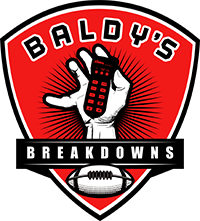
In the high-stakes world of the NFL, where every play can be the difference between triumph and heartbreak, the brilliance of game strategy stands as the cornerstone of success. Elite coaches and players meticulously craft their plans, blending innovation, precision, and instinct to carve out moments of magic on the field. As we peel back the curtain on these gridiron masterminds, prepare to be enthralled by the intricacies and brilliance of the strategies that drive championship dreams. Dive into the electrifying world of NFL game strategy and uncover the genius that catapults teams to greatness.
The Heartbeat of Champions: Unraveling NFL Game Strategies
In the boiling cauldron of an NFL game, where adrenaline pumps and the margin for error is razor-thin, game strategy is the lifeblood that sustains teams. The game plan is not just a series of X’s and O’s on a whiteboard—it’s a tapestry woven with data, player skills, psychological insight, and foresight, creating a harmonious blend that can tilt the scales in any given contest. Understanding the nuances of game strategy in football offers not just a glimpse into the mind of greatness but also reminds us of the hours of preparation and the relentless pursuit of perfection that define the NFL.
The Anatomy of a Game Plan
A flawless game strategy begins in the war room, where coaches analyze mountains of data. They dissect opponent tendencies, scrutinize game footage, and decode enemy playbooks. The foundation of this intelligence-gathering lies in film study, where every snap, blitz, and formation is parsed for potential weaknesses to exploit.
Incorporating insights from analytics has revolutionized strategy-making. Analytics help in identifying tendencies that might be too subtle for the naked eye. Metrics such as expected points added (EPA) or win probability can drastically influence in-game decisions, making the coaching staff’s reliance on advanced statistics a pivotal part of modern strategies.
Crafting Offensive Masterpieces
On the offensive side, a well-devised game strategy leans heavily on the use of formations and personnel packages to confuse the defense and create mismatches. The West Coast offense with its reliance on quick, precise passes, or the Air Raid offense with its vertical attack, each have unique advantages and fit specific player strengths.
Utilizing pre-snap motion is another component that can dissect defensive tactics and provide quarterbacks with critical information. When a player goes in motion, defenses are forced to reveal whether they are in zone coverage or man coverage, which can be the silver bullet needed to adjust for the perfect play call.
Play-action passing creates a deceptive illusion, momentarily freezing linebackers and safeties when they mistake run action for a real run, making passing windows more expansive. Successful application of play-action makes a running game elite and inherently unpredictable.
Defining Defensive Prowess
In contrast, defensive game strategies beg for ingenuity and resilience to negate high-flying offenses. Defensive coordinators thrive on unpredictability, using a mix of coverages, blitzes, and stunts to bring down intricately built offensive schemes.
Disguising coverage is crucial. Showing a complex zone while playing man coverage underneath or mixing Cover-2 and Cover-3 alignments, can befuddle quarterbacks and delay decision-making. Blitz packages—whether zone blitzes or zero blitzes—keep quarterbacks from settling into a rhythm and exploit even the slightest lapse in pass protection.
The success of strategies such as stunts and twists, which involve defensive linemen crossing paths at the line of scrimmage, relies on such effective deception. Schemed disruptions like these derail blocking assignments and create chaos, leading to critical stops behind the line of scrimmage.
Situational Mastery
Crucial to the game strategy is situational football, where the context dictates tactics beyond the X’s and O’s. Whether it’s a two-minute drill, fourth-down decision-making, or managing the clock in crunch time, understanding situational nuances creates championship moments.
Two-minute drills highlight the importance of quick thinking and pre-planned plays designed for urgency, enabling offenses to execute swiftly. Conversely, defensive units focus on limiting sideline routes to force clock consumption during such pivotal moments.
Halftime Adjustments: The Battle Within a Battle
Every strategic masterpiece is subject to change with halftime adjustments, a critical pivot where coaches reassess and tweak their plans in response to real-time game evolution. Teams rise and fall on the backs of how well they can adjust: correcting defensive lapses, modifying blocking schemes, or unveiling new routes and personnel groups the opposition is unprepared to counter.
Halftime adjustments hallmark a coach’s adaptability and often turn tides in closely contested games. For many, it’s viewed as a testament to in-game ingenuity and the ability to outthink and outmaneuver opponents in real-time.
Coaching Mindsets: The Strategists Behind the Scenes
Behind every conquering team is a mastermind coach whose ability to craft and execute a game strategy makes or breaks seasons. Coaches like Bill Belichick and Andy Reid exemplify strategic brilliance through years of innovation, meticulous game preparation, and uncanny adaptability. Known for bodying flexibility within game scripts and redefining norms, such coaches cast long shadows over the landscape of NFL strategies.
The level of preparation underscores the commitment it takes to orchestrate an elite game plan—combining tactics, player strengths, and matchups while adapting mid-game showcases the unparalleled grind of NFL coaching.
Harnessing Technology: How the Digital Age Guides Strategy
The digital age has supplied tools like never before, bringing forth the magnitude of technology to enhance strategy. Platforms like Next Gen Stats capture player speeds, distances, and on-field positioning instantaneously, enabling a granularity that was once unimaginable. Analytics and software programs now allow for endless simulation of plays, assessments of various tactical outcomes, and ruthlessly efficient scouting reports, optimizing preparation.
Joining the Conversation
As fans and aspiring strategists ourselves, sharing perspectives and engaging in discussions via Facebook, X, and YouTube can deepen understanding and appreciation for this marriage of skill and strategy. Delving into the intricacies allows us to see football not just as a sport but as a dynamic chess game populated by tactical geniuses.
Conclusion
Winning in the NFL goes beyond luck or athletic prowess; it’s about meticulous strategy, the intersection of data analysis, creativity, and split-second decision-making.
